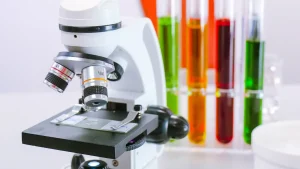Graphite coatings are game-changers when it comes to durability, heat resistance, and lubrication. They’re essential for protecting surfaces like グラファイトの感受性 and ensuring smooth performance. But here’s the catch—proper application is key. Whether you’re working with a グラファイトの感受性 or applying a cvdタックコーティング, precision makes all the difference.

要点
- Begin with a clean surface. Cleaning helps the coating stick better.
- Pick the correct tools to apply. A good brush or spray works best.
- Check and care for the coated surface often. This makes it last longer.
Materials and Tools for Graphite Coating
Essential materials needed
Before you start applying a グラファイトコーティング, gather all the necessary materials. You’ll need the graphite coating itself, which often comes in liquid or powder form. Check the product label to ensure it’s suitable for your specific project. If you’re working on metal surfaces, you might also need a primer to help the coating adhere better. Don’t forget cleaning supplies like degreasers or alcohol wipes to prep the surface. These materials ensure the coating bonds properly and lasts longer.
Tools for effective application
Having the right tools makes the application process smoother. A high-quality brush or roller works well for small surfaces. For larger or more intricate areas, consider using a spray gun for even coverage. You’ll also need a mixing stick or paddle to stir the coating thoroughly. If you’re using a spray gun, keep a compressor handy to maintain consistent pressure. A drop cloth or tarp can protect your workspace from accidental spills.
Safety equipment to ensure protection
Safety should always come first. Graphite coatings can release fumes, so wear a respirator mask to protect your lungs. Use gloves to keep the coating off your skin and safety goggles to shield your eyes. If you’re working in a confined space, ensure proper ventilation by setting up fans or working near open windows. These precautions keep you safe while you focus on achieving a durable finish.
Preparing for Graphite Coating Application
Cleaning and preparing the surface
Before you apply the グラファイトコーティング, you need to make sure the surface is spotless. Dirt, grease, or rust can prevent the coating from sticking properly. Start by wiping the surface with a clean cloth to remove loose debris. For tougher grime, use a degreaser or rubbing alcohol. If the surface has old paint or rust, grab some sandpaper or a wire brush to smooth it out. Don’t skip this step—it’s the foundation for a durable finish. Once the surface is clean, let it dry completely before moving on.
Mixing the graphite coating for consistency
Consistency is key when it comes to applying a graphite coating. If the coating isn’t mixed well, you might end up with uneven results. Check the product instructions first. Some coatings need to be shaken, while others require stirring. Use a mixing stick or paddle to blend the coating until it’s smooth and uniform. If it’s too thick, you can thin it out with a compatible solvent (check the label for recommendations). Proper mixing ensures the coating spreads evenly and performs as expected.
Setting up the workspace
A well-organized workspace makes the application process much easier. Choose a clean, dry area with good ventilation. Lay down a drop cloth or tarp to protect the floor from spills. Keep all your tools and materials within arm’s reach. If you’re using a spray gun, set up your compressor and test it before starting. Good lighting is also important—it helps you spot any missed spots or uneven areas during application.
Applying the Graphite Coating

Step-by-step application process
Applying a グラファイトコーティング doesn’t have to be complicated if you follow these steps:
- Start with a clean surface: Make sure the surface is dry and free of dust or grease.
- Load your tool: Dip your brush, roller, or fill your spray gun with the mixed coating.
- Apply the first layer: Use smooth, even strokes if you’re brushing or rolling. For spraying, hold the nozzle about 6-8 inches from the surface and move in steady passes.
- Let it dry: Allow the first coat to dry completely. Check the product instructions for drying times.
- Add additional layers: Apply a second or third coat if needed, following the same process. Each layer builds up the durability of the coating.
Take your time with each step. Rushing can lead to uneven results.
Tips for uniformity and thickness
Getting an even coating is all about technique. If you’re brushing, avoid overloading the brush. Too much coating can cause drips. For spraying, keep the nozzle moving at a consistent speed. Overlapping each pass slightly ensures full coverage.
Pay attention to thickness. A thin, even layer is better than a thick, uneven one. Thick layers take longer to dry and may crack. If you’re unsure, test on a small area first.
Avoiding common application mistakes
Mistakes can ruin your hard work. Here’s how to avoid them:
- Skipping surface prep: A dirty surface leads to poor adhesion.
- Applying too much at once: Thick layers can sag or peel.
- Ignoring drying times: Rushing to add layers can trap moisture, weakening the coating.
- Using the wrong tools: A low-quality brush or clogged spray gun can create uneven results.
Stay patient and follow the instructions on your graphite coating product. Small details make a big difference in durability.
Drying and Testing the Coating
Proper drying techniques
Drying the graphite coating properly is just as important as applying it. Rushing this step can weaken the coating and reduce its durability. Start by checking the product instructions for the recommended drying time. Most coatings need a few hours to dry, but some may require overnight curing.
If you’re working indoors, make sure the area has good airflow. Use fans to speed up the drying process, but don’t aim them directly at the surface. This can cause uneven drying. For outdoor projects, avoid humid or rainy days. Moisture in the air can interfere with the coating’s ability to set.
Temperature also plays a big role. Keep the workspace within the temperature range specified on the product label. Too cold, and the coating might not cure properly. Too hot, and it could dry too quickly, leading to cracks.
Testing for durability and effectiveness
Once the coating has dried, it’s time to test its durability. Start with a visual inspection. Look for any cracks, bubbles, or uneven areas. These could indicate issues with the application or drying process.
Next, perform a scratch test. Use a small, sharp object to gently scratch the surface. A properly applied graphite coating should resist minor scratches. If it flakes or peels, you may need to reapply it.
For heat resistance, expose the coated surface to a controlled heat source. Check if the coating maintains its integrity without discoloration or damage. If lubrication is a key feature, test the surface by running a smooth object across it. It should glide effortlessly.
Maintaining the Graphite Coating
Maintenance tips for long-term durability
To keep your graphite coating in top shape, regular maintenance is key. Start by inspecting the coated surface every few months. Look for signs of wear, like scratches or thinning areas. If you notice dirt or debris, clean it gently with a soft cloth or sponge. Avoid abrasive cleaners—they can damage the coating.
For surfaces exposed to heat or friction, monitor their performance. If the coating starts losing its lubricating properties, it might need attention. Keep the environment dry and free of moisture, as water can weaken the coating over time.
Troubleshooting common issues
Sometimes, even with proper care, issues can arise. If the coating starts peeling, it’s often due to poor adhesion during application. In this case, you’ll need to remove the damaged area and reapply the coating.
For cracks or bubbles, uneven drying is usually the culprit. Sand down the affected area and apply a fresh layer. If the coating feels rough or uneven, it might be too thick. Sand it lightly and add a thinner layer for a smoother finish.
When and how to reapply the coating
Reapplying the coating depends on how often the surface is used. For high-use items, check the coating every six months. If you see significant wear, it’s time for a fresh layer.
To reapply, clean the surface thoroughly and sand it lightly to remove any loose coating. Then, follow the same steps you used during the initial application. A well-maintained graphite coating ensures long-lasting durability and performance.
製品の詳細については、下記までお問い合わせください。 steven@china-vet.com またはウェブサイト: www.vet-china.com







